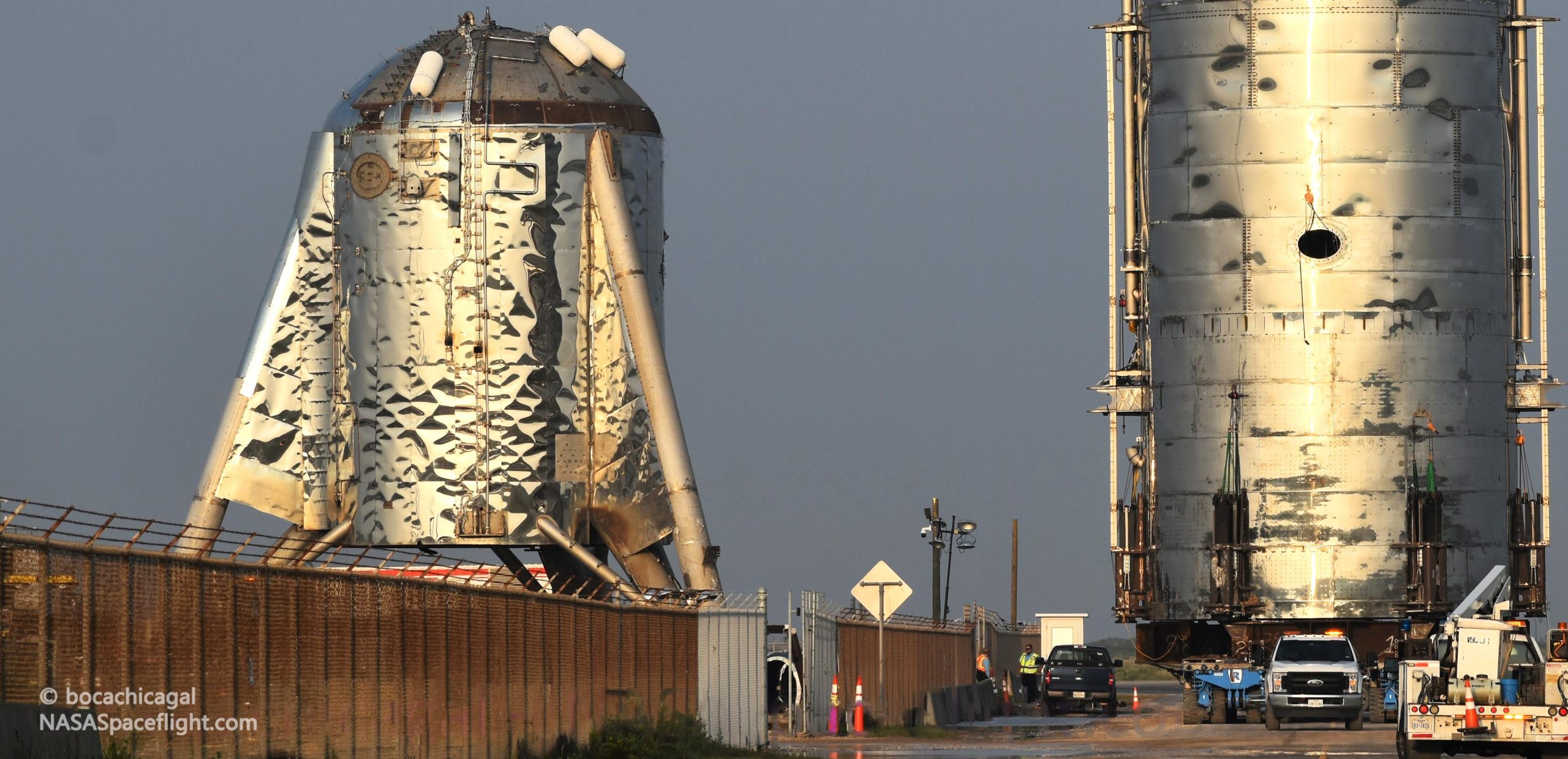
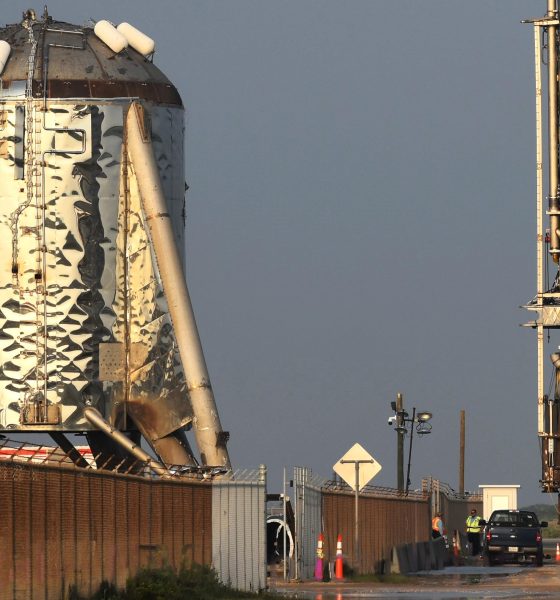
News
Elon Musk gifts SpaceX Starship angel investor a piece of Starhopper history
According to photos posted by the Japanese investor, SpaceX CEO Elon Musk has gifted Yusaku Maezawa a significant piece of Starhopper history, a celebration of the rocket prototype’s successful flight tests and a gesture of thanks for Maezawa’s substantial support.
Back in September 2018, Musk revealed that Japanese billionaire Yusaku Maezawa had become the first true customer for SpaceX’s next-generation Starship launch vehicle. In fact, Maezawa announced DearMoon, a private spaceflight venture with the aim of sending a dozen or so artists on the first commercial crewed mission around the Moon – all for free.
In a bid to assist Starship development and simultaneously secure rights to the massive spacecraft’s first crewed lunar launch, Maezawa committed what is believed to be several hundred million dollars of his personal fortune to SpaceX. In turn, the Japanese billionaire plans to select roughly a dozen artists from around the world and offering them a free ticket aboard Starship’s first crewed circumlunar launch, traveling once around the Moon and returning to Earth after 10 or so days in space.
Perhaps just a few weeks after the DearMoon announcement and Starship event, SpaceX CEO Elon Musk decided to radically change the Starship program, entirely replacing the vehicle’s main structural material of choice – carbon fiber composites – with stainless steel. The primary goal was to dramatically lower the cost of development and vehicle production and speed things up, but Musk quickly realized that steel could unintuitively be better than carbon fiber in almost every way.
After Musk’s decision, SpaceX pivoted from carbon fiber to steel at a spectacular pace. Barely six months after the design change, a SpaceX team had built up its Boca Chica, Texas facilities from almost nothing, begun to build full-scale steel hardware, and nearly completed the first low-fidelity prototype, known as Starhopper. That vehicle began propellant loading and wet dress rehearsal testing in early-April 2019 and although technical difficulties with its next-generation Raptor engines caused several months of delays, it moved into its first flight test campaign three months later.
Starhopper’s first untethered flight was completed successfully on July 25th, reaching an apogee of ~18 meters (60 ft). A little over one month later, Starhopper lifted off for the second time on a significantly more ambitious ~150m (500 ft) flight test, completed successfully after about 60 seconds in flight. That second test would be Starhopper’s last and SpaceX quickly turned its focus to completing the first full-scale, full-fidelity Starship prototypes, known as Mk1 (TX) and Mk2 (FL).
Throughout this process, Yusaku Maezawa has followed along with SpaceX. Rather than a simple lump-sum agreement, the billionaire’s contract with SpaceX is structured much more specifically, essentially allowing the company to unlock additional funding after certain milestones – like Starhopper’s flight tests – are completed. The arrangement is more of a carrot on a stick than something dead-serious – Maezawa is probably not going to completely withhold funding if SpaceX slightly misses exact targets or suffers anomalies during a complex launch vehicle development program.
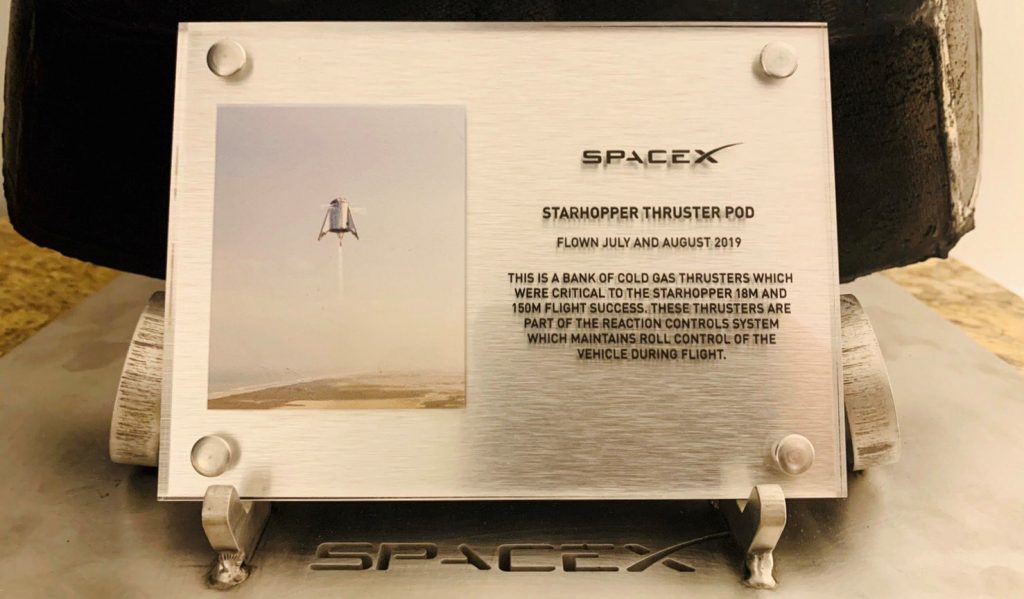
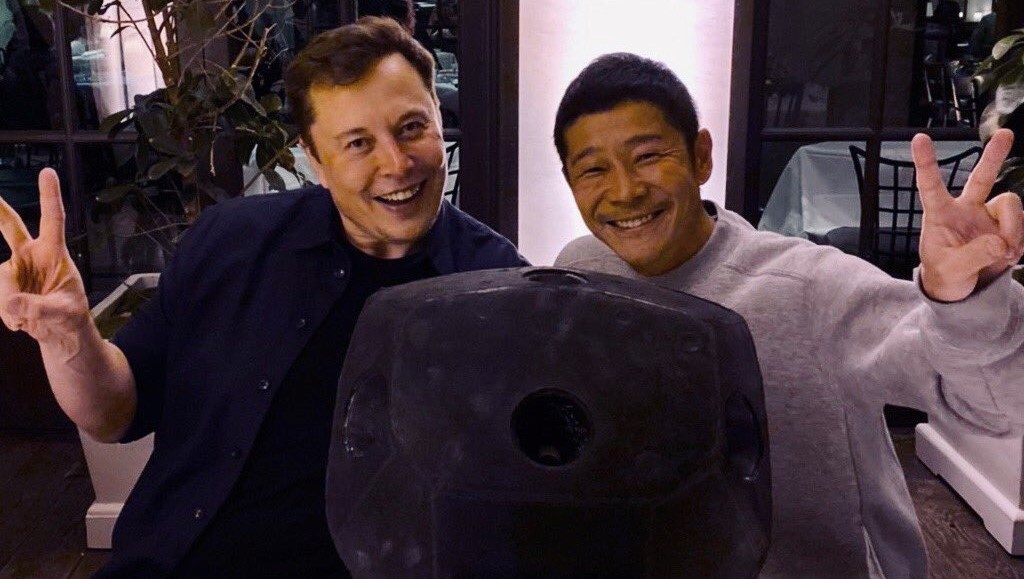
In order to complete its two flight tests, Starhopper needed some kind of attitude control system (ACS) to remain stable and SpaceX chose a decidedly SpaceX-y solution, simply bolting on flight-proven Falcon 9 thruster pods. Those pods use high-pressure nitrogen to change Falcon 9’s attitude, correctly point the rocket, and settle its propellant while the rocket is in a vacuum (or freefall). They can also provided limited control authority in atmosphere, which is what SpaceX used them for on Starhopper.
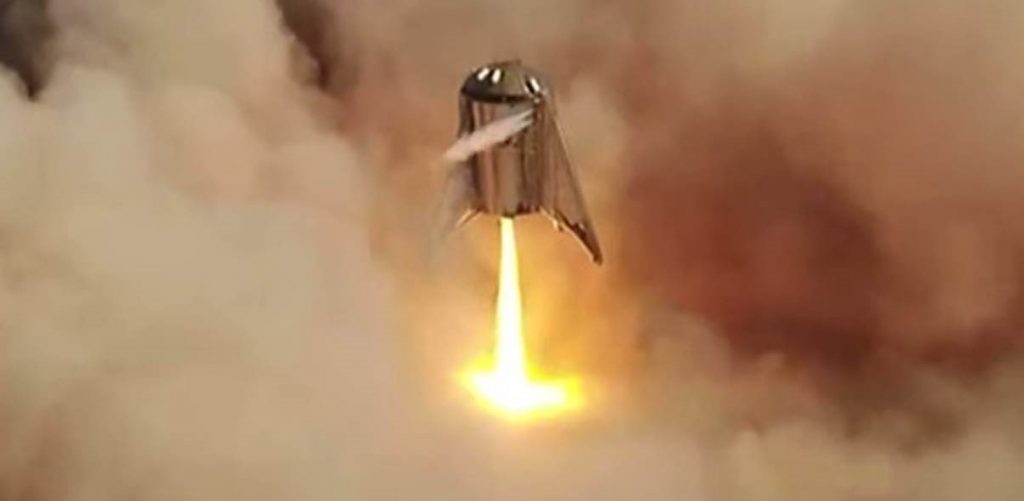

As a gesture of gratitude for Maezawa’s extremely helpful financial support, SpaceX gifted him an entire Starhopper thruster pod. SpaceX often does similar things for major flight milestones, creating commemorative gifts out of retired hardware (rocket tanks, engine bells, grid fins, parachute threads, etc.) that employees are able to purchase. An entire thruster pod is at least a few orders of magnitude above that, a sign of just how grateful SpaceX is to Maezawa.
Of note, in his tweet showing off the thruster pod, Maezawa suggested that “Starship development is going better than expected”, indicating that he may “need to invite a passenger soon” for his planned circumlunar voyage around the Moon. Prior to Starship’s radical shift from carbon fiber to steel, that mission was scheduled no earlier than 2023. In recent months, SpaceX executives have made it clear that they are now targeting Starship Moon landings by 2022, suggesting that the first circumlunar missions – a far easier task than landing – could be possible even sooner than that.
Check out Teslarati’s Marketplace! We offer Tesla accessories, including for the Tesla Cybertruck and Tesla Model 3.

Elon Musk
Elon Musk just said some crazy stuff about the Tesla Roadster

Elon Musk appeared on the Moonshots podcast with Peter Diamandis today to discuss AGI, U.S. vs. China, Tesla, and some other interesting topics, but there was some discussion about the upcoming unveiling of the Roadster, the company’s electric supercar that will arrive several years after it was initially slated for release.
Musk made some pretty amazing claims about the Roadster; we already know it is supposed to be lightning-fast and could even hover, if Tesla gets everything to happen the way it wants to. However, the car has some pretty crazy capabilities, some of which have not even been revealed.
On the podcast, Musk said:
“This is not a…safety is not the main goal. If you buy a Ferrari, safety is not the number one goal. I say, if safety is your number one goal, do not buy the Roadster…We’ll aspire not to kill anyone in this car. It’ll be the best of the last of the human-driven cars. The best of the last.”
🚨 Elon on the Roadster unveiling, scheduled for April 1:
— TESLARATI (@Teslarati) January 6, 2026
Musk makes a good point: people who buy expensive sports cars with ridiculous top speeds and acceleration rates do not buy them to be safe. They hope they are safe in case of an emergency or crash, but safety is not at the forefront of their thoughts, because nobody buys a car thinking they’ll crash it.
The Roadster is truly going to push the limits and capabilities of passenger vehicles; there’s no doubt about that. Tesla plans to show off the new version car for the first time on April 1, and Musk has only hinted at what is possible with it.
Musk said back in November:
“Whether it’s good or bad, it will be unforgettable. My friend Peter Thiel once reflected that the future was supposed to have flying cars, but we don’t have flying cars. I think if Peter wants a flying car, he should be able to buy one…I think it has a shot at being the most memorable product unveiling ever. [It will be unveiled] hopefully before the end of the year. You know, we need to make sure that it works. This is some crazy technology in this car. Let’s just put it this way: if you took all the James Bond cars and combined them, it’s crazier than that.”
Production is set to begin between 12 and 18 months after the unveiling, which would put the car out sometime in 2027. Hopefully, Tesla is able to stay on track with the scheduling of the Roadster; many people have been waiting a long time for it.
News
Tesla launches hiring for Robotaxi program in its twentieth country
Overall, the hiring signals Tesla’s aggressive timeline for global dominance in autonomous mobility.

Tesla has launched a hiring initiative for its Robotaxi program in its twentieth country, as the company posted two new jobs in Thailand this week.
Tesla is hiring in Bangkok and Kowloon for the Vehicle Operator position, which is related to data collection, and is the first in Thailand, but the twentieth country overall, as the company tries to expand into other markets.
🚨 BREAKING: Tesla is hiring additional full-time Vehicle Operators in Bangkok, Thailand.
Previous openings were 6-month, part-time roles. These are equivalent to AI Safety Operator roles in the U.S. pic.twitter.com/R6LzoU1bos— Tesla Yoda (@teslayoda) January 5, 2026
Tesla has had active job postings for Vehicle Operator positions in the United States, India, Israel, Taiwan, Germany, the Czech Republic, Hungary, the UK, Finland, Switzerland, Sweden, the Netherlands, Austria, Spain, Norway, Italy, and Turkey in past listings.
These postings are not all currently available, likely because the roles have been filled.
Thailand is the most recent, and broadens the company’s potential path to expanding its ride-hailing program, which is only active in the United States in Austin, Texas, and the California Bay Area, so far.
These roles typically involve data collection, which assists in improving Autopilot and Full Self-Driving operation. Tesla’s self-driving programs utilize real-world data that is accumulated and stored, observing vehicle and traffic behavior, as well as tendencies that are performed by human drivers to help increase safety and overall performance.
Overall, the hiring signals Tesla’s aggressive timeline for global dominance in autonomous mobility. Although the company has several high-profile rivals and competitors in the field, it has established itself as a main player and a leader in the development of autonomous technology, especially in the U.S., as its FSD suite is refined on almost a weekly basis.
The Full Self-Driving suite is available in seven countries and territories currently, including the U.S., Canada, China, Mexico, Puerto Rico, Australia, and New Zealand. Its biggest goal for expansion is currently the European market, where regulatory hurdles have been the main bottleneck prolonging its launch on the continent.
Tesla has performed months of testing in various European countries, including France and Spain, and does have support in some areas from various regulatory agencies. However, the company is hoping to get through this red tape and offer its suite in Europe for the first time, hopefully this year.
News
Tesla China rolls out Model Y upgrades, launches low-interest financing
These strategies are aimed at improving the ownership experience and keeping vehicle pricing competitive in the world’s largest electric vehicle market.

Tesla has rolled out minor updates to the five-seat Model Y in China, upgrading the vehicle’s center display to a higher-resolution 16-inch 2K screen. The electric vehicle maker also introduced attractive financing options, including 7-year low-interest rates, to offset the new purchase tax on EVs.
These strategies are aimed at improving the ownership experience and keeping vehicle pricing competitive in the world’s largest electric vehicle market.
Five-seat Model Y gets larger, better display
With its recent update, all three variants of the five-seat Model Y now feature an upgraded 16-inch 2K resolution center display, which replaces the vehicle’s previous 15.4-inch 1080p panel. This screen was already used in the six-seat Model Y L, and it offered improved visual clarity. Tesla China has also updated the Model Y’s headliner to black, giving the vehicle a sleeker appearance.
Prices of the five-seat Model Y remain unchanged at RMB 263,500, RMB 288,500, and RMB 313,500 for the respective trims. This update enhances the cabin experience as domestic rivals are already adopting high-resolution screens. As noted in a CNEV Post report, some domestic automakers have begun rolling out vehicles equipped with 3K-resolution displays.
New financing offers
Tesla also launched ultra-long-term financing offers for its locally produced models in China, which include the Model 3 sedan, the five-seat Model Y, and the six-seat Model Y L, through January 31, 2026. The 7-year option features an annualized fee rate as low as 0.5%, which is equivalent to 0.98% interest. This is expected to save customers up to RMB 33,479 ($4,790) compared to standard rates.
A 5-year zero-interest plan is also available, and it has been extended to the Tesla Model Y L for the first time. These incentives help offset China’s new 5% purchase tax on New Energy Vehicles (NEVs) in 2026-2027. Some of Tesla’s rivals in China have announced in recent months that they would be covering the purchase tax owed by buyers early this year.








